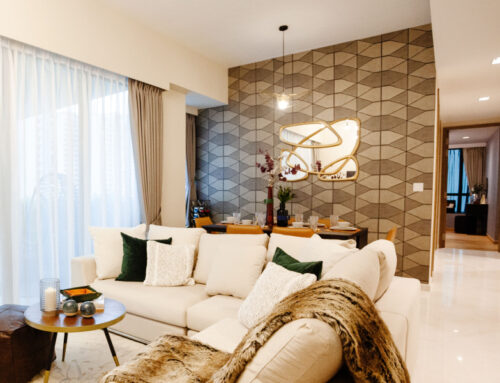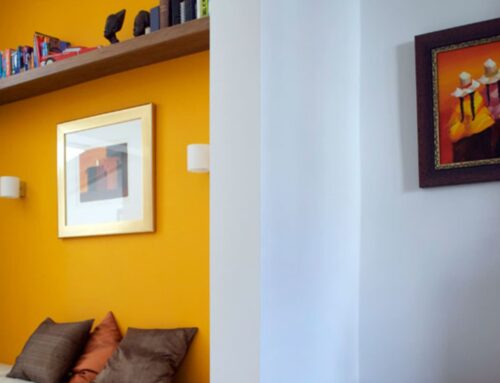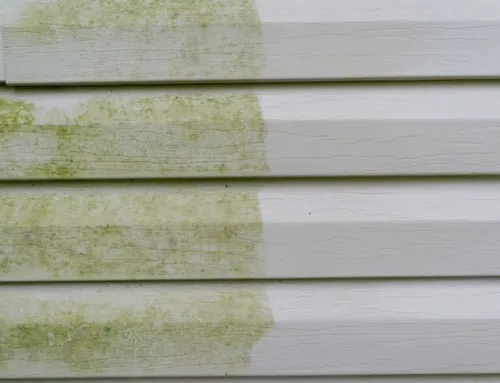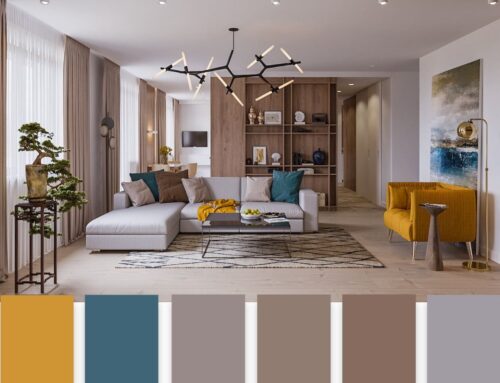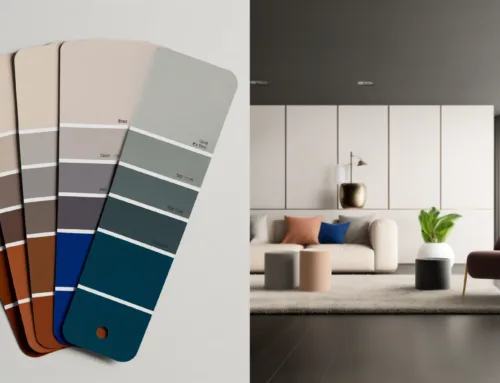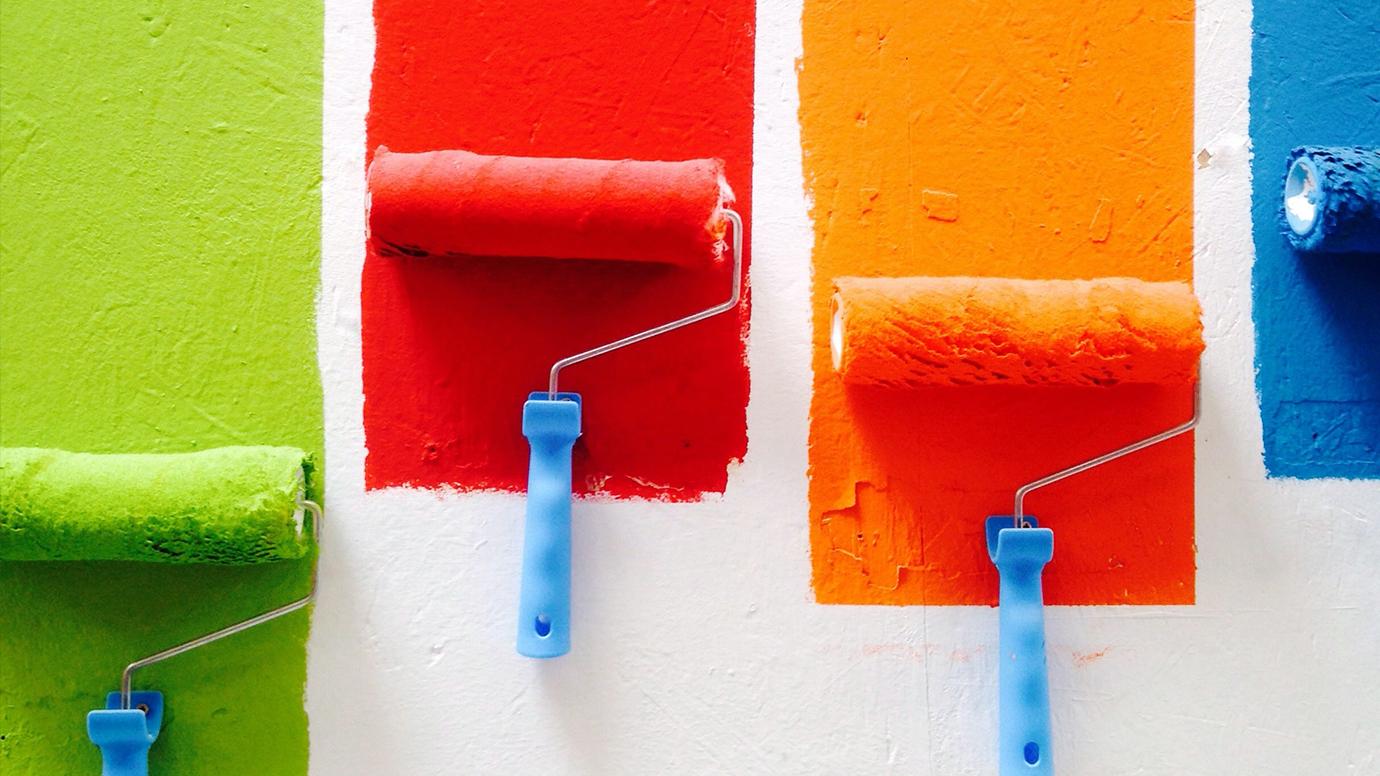
Lighting’s Impact on Paint Color Perception
When it comes to choosing paint colors for our homes or any other space, we often rely on our personal preferences and the color swatches provided by paint manufacturers. However, what many people fail to consider is the impact that lighting can have on the way we perceive paint colors. Lighting plays a crucial role in how colors appear to the human eye, and understanding this relationship is essential for achieving the desired aesthetic in any painting project.
The way we perceive colors is influenced by various factors, including the type and intensity of light that illuminates them. Different lighting conditions can alter the appearance of paint colors, making them appear brighter, darker, warmer, or cooler than they actually are. This means that a color that looks perfect under one type of lighting may look completely different under another. Therefore, it is crucial to consider lighting when choosing paint colors to ensure that the final result matches your vision.
Key Takeaways
- Lighting plays a crucial role in how we perceive paint colors.
- Color temperature of lighting can affect how colors appear.
- Natural light can change the way paint colors look throughout the day.
- Artificial light can also alter the perception of paint colors.
- Choosing the right light bulbs is important for accurate paint color perception.
The Role of Lighting in Color Temperature
Color temperature is a term used to describe the warmth or coolness of light. It is measured in Kelvin (K) and ranges from warm (lower Kelvin values) to cool (higher Kelvin values). The color temperature of light can significantly impact how we perceive paint colors.
Warm light, with a lower color temperature (around 2700K-3000K), tends to enhance warm colors such as reds, oranges, and yellows. These colors appear more vibrant and intense under warm lighting conditions. On the other hand, cool light, with a higher color temperature (around 5000K-6500K), enhances cool colors like blues and greens. These colors appear crisper and more vivid under cool lighting conditions.
Understanding color temperature is crucial when choosing paint colors because it can help you achieve the desired mood or atmosphere in a room. For example, if you want a cozy and inviting living room, you may opt for warm colors and warm lighting to create a harmonious and comfortable space. Conversely, if you want a modern and refreshing bathroom, you may choose cool colors and cool lighting to achieve a clean and crisp look.
The Effect of Natural Light on Paint Color Perception
Natural light is constantly changing throughout the day, and this can have a significant impact on how paint colors appear. The intensity and direction of natural light can alter the perceived color of walls, making it essential to consider these factors when choosing paint colors.
Direct sunlight can be particularly challenging when it comes to paint color perception. Sunlight contains all colors of the spectrum, which means it can wash out or distort the true color of paint. For example, a paint color that looks vibrant and rich in the morning may appear dull and faded in the afternoon when the sun is at its brightest. It is important to test paint colors under different lighting conditions throughout the day to ensure that they maintain their desired appearance.
Cloudy skies can also affect paint color perception. When the sky is overcast, natural light becomes diffused and less intense. This diffused light can make colors appear softer and more muted. If you are choosing paint colors for a room that receives mostly indirect natural light, it is important to consider this factor to avoid ending up with colors that appear too dark or dull.
The Impact of Artificial Light on Paint Color Perception
| Light Source | Color Temperature (Kelvin) | Color Rendering Index (CRI) | Effect on Paint Color Perception |
|---|---|---|---|
| Incandescent | 2700K | 100 | Warm colors appear more vibrant, cool colors appear muted |
| Halogen | 3000K | 100 | Colors appear more true to life |
| Fluorescent | 3500K-4100K | 80-90 | Colors appear cooler and less vibrant |
| LED | 2700K-6500K | 80-95 | Color perception varies depending on the specific LED and its color rendering capabilities |
Artificial light sources, such as incandescent or fluorescent bulbs, can also significantly impact how we perceive paint colors. Different types of artificial light emit different color temperatures, which can alter the appearance of paint colors.
Incandescent bulbs produce warm light with a lower color temperature, similar to natural sunlight. This type of lighting tends to enhance warm colors and make them appear more vibrant. On the other hand, fluorescent bulbs emit cool light with a higher color temperature, which can make cool colors appear more intense.
In addition to color temperature, the color rendering index (CRI) of artificial light sources also affects how accurately colors are perceived. The CRI measures how well a light source can reproduce the true colors of objects compared to natural sunlight. A higher CRI indicates better color accuracy. When choosing artificial light sources for your space, it is important to consider both the color temperature and the CRI to ensure that the paint colors appear as intended.
The Importance of Choosing the Right Light Bulbs for Paint Color Perception
Choosing the right light bulbs for your space is crucial for achieving accurate paint color perception. The type of light bulb you choose will determine the color temperature and CRI, which can significantly impact how paint colors appear.
For spaces where warm and cozy ambiance is desired, such as living rooms or bedrooms, incandescent bulbs with a color temperature of around 2700K-3000K are a good choice. These bulbs emit warm light that enhances warm colors and creates a comfortable atmosphere.
For spaces where a clean and crisp look is desired, such as kitchens or bathrooms, fluorescent bulbs with a color temperature of around 5000K-6500K are more suitable. These bulbs emit cool light that enhances cool colors and creates a bright and refreshing environment.
When it comes to the CRI, it is recommended to choose light bulbs with a CRI of 90 or higher for accurate color perception. This ensures that the true colors of objects, including paint colors, are faithfully reproduced under artificial lighting conditions.
The Different Types of Lighting and Their Effect on Paint Color Perception
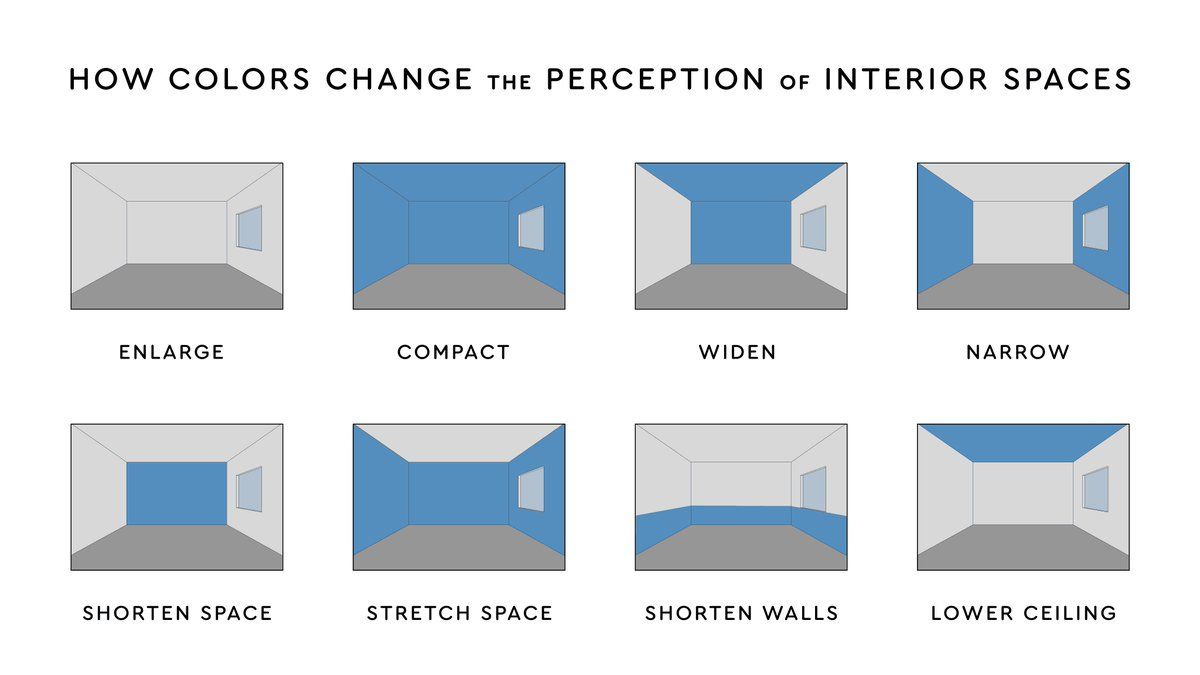
In addition to considering the color temperature and CRI of light bulbs, it is also important to choose the right type of lighting for different rooms and purposes. There are three main types of lighting: ambient, task, and accent lighting, and each can have a different effect on paint color perception.
Ambient lighting provides overall illumination for a room and sets the general mood or atmosphere. It can be achieved through ceiling-mounted fixtures, chandeliers, or wall sconces. The type of ambient lighting you choose can impact how paint colors appear. For example, recessed downlights create a more focused and directional light that can enhance the texture and depth of paint colors. On the other hand, diffused lighting, such as that provided by pendant lights with fabric shades, can soften the appearance of paint colors and create a more relaxed ambiance.
Task lighting is used to provide focused illumination for specific activities, such as reading or cooking. It is important to consider task lighting when choosing paint colors for spaces where specific tasks are performed. For example, if you are choosing paint colors for a home office, it is important to ensure that the lighting is bright enough to provide adequate illumination for reading and working. This will help you accurately perceive the true colors of your walls and other objects in the room.
Accent lighting is used to highlight specific features or objects in a room, such as artwork or architectural details. It can be achieved through spotlights, track lighting, or wall-mounted fixtures. Accent lighting can significantly impact how paint colors appear by creating contrast and emphasizing certain areas. For example, if you have chosen a bold accent wall color, using accent lighting to highlight it can make it appear even more vibrant and eye-catching.
The Importance of Testing Paint Colors in Different Lighting Conditions
Given the significant impact that lighting can have on paint color perception, it is crucial to test paint colors in different lighting conditions before committing to a color. This will help you ensure that the colors you choose maintain their desired appearance under various lighting scenarios.
To test paint colors, start by applying small samples of each color to the walls or other surfaces in the room you are planning to paint. It is important to apply the samples directly on the walls rather than on small swatches, as the color can appear different when applied to a larger surface.
Once the samples are applied, observe how they look under different lighting conditions throughout the day. Pay attention to how the colors change in natural light, as well as under different types of artificial light. Take note of any significant differences in color appearance and consider whether these changes align with your vision for the space.
It is also helpful to observe the paint samples at different times of the day when natural light is at its brightest and dimmest. This will give you a better understanding of how the colors will look under different lighting intensities.
The Role of Professional Painters in Ensuring Accurate Paint Color Perception
Professional painters play a crucial role in ensuring accurate paint color perception by considering lighting and testing colors. They have the knowledge and experience to guide you through the process of choosing paint colors that will look their best under different lighting conditions.
When choosing a professional painter, it is important to find someone who understands the importance of lighting in color perception. Look for painters who have experience working with different types of lighting and who can provide references or examples of their work in various lighting scenarios.
A professional painter should also be willing to work with you to test paint colors in your space before starting the project. They should be able to provide guidance on how to choose the right colors and how to test them under different lighting conditions. This will help ensure that you are satisfied with the final result and that the paint colors accurately reflect your vision for the space.
Champion Painting’s Commitment to Accurate Paint Color Perception

At Champion Painting, we understand the importance of accurate paint color perception and prioritize it in every project we undertake. We have years of experience working with different types of lighting and have developed a process that ensures accurate color representation.
Our team of professional painters is trained to consider lighting when helping clients choose paint colors. We take the time to understand your vision for the space and provide guidance on color selection based on the lighting conditions in your home or office.
Before starting any painting project, we encourage our clients to test paint colors in their space. We provide samples and guidance on how to apply them to the walls and observe their appearance under different lighting conditions. This allows our clients to make informed decisions and ensures that the final result meets their expectations.
The Importance of Understanding Lighting’s Impact on Paint Color Perception for Successful Painting Projects
In conclusion, understanding the impact of lighting on paint color perception is crucial for successful painting projects. Lighting can significantly alter the appearance of paint colors, making it essential to consider lighting when choosing colors and testing them in different lighting conditions.

By understanding color temperature and the effect of natural and artificial light on paint color perception, you can make informed decisions about the colors you choose for your space. Additionally, by choosing the right light bulbs and types of lighting for different rooms and purposes, you can enhance the appearance of paint colors and create the desired atmosphere.
Professional painters, such as those at Champion Painting, can help ensure accurate color perception by considering lighting and testing colors. Their expertise and experience can guide you through the process of choosing paint colors that will look their best under different lighting conditions.
By prioritizing lighting in your painting projects, you can achieve the desired aesthetic and create a space that reflects your vision. So, next time you embark on a painting project, remember to consider lighting as an essential factor in paint color perception.
If you’re interested in learning more about home office decor, you might find this article on housepainterpismobeach.com helpful. It provides tips and ideas for creating a stylish and functional workspace in your home. Additionally, if you’re looking for ways to display your belongings while adding a touch of elegance to your space, you should check out this article on housepainterpismobeach.com that discusses the best floating shelves available in the market. Lastly, if you’re considering staining your decking to enhance its appearance and protect it from the elements, this article on housepainterpismobeach.com offers valuable insights and step-by-step instructions.
FAQs

What is the impact of lighting on paint colors?
Lighting can significantly affect the appearance of paint colors. The same color can look different in different lighting conditions, making it essential to consider the lighting when choosing paint colors.
What are the different types of lighting that can affect paint colors?
There are three main types of lighting that can affect paint colors: natural light, incandescent light, and fluorescent light. Each type of lighting has a different color temperature, which can alter the way paint colors appear.
How does natural light affect paint colors?
Natural light can make paint colors appear brighter and more vibrant. However, the color of natural light changes throughout the day, so it’s essential to consider the time of day when choosing paint colors.
How does incandescent light affect paint colors?
Incandescent light can make paint colors appear warmer and more yellow. This type of lighting is often used in homes, so it’s important to consider how paint colors will look under incandescent light.
How does fluorescent light affect paint colors?
Fluorescent light can make paint colors appear cooler and more blue. This type of lighting is often used in offices and commercial buildings, so it’s important to consider how paint colors will look under fluorescent light.
What should I consider when choosing paint colors?
When choosing paint colors, it’s important to consider the lighting in the room. You should also consider the mood you want to create and the other colors in the room. It’s a good idea to test paint colors in the room under different lighting conditions before making a final decision.
Page design by: Website Creators Near Me

Champion Painting
Recent Post's
Champion Painting is a professional painting contractor that provides high-quality painting services for residential and commercial spaces. With years of experience in the industry, Champion
Painting Safety Precautions to Keep You Protected When it comes to any painting project, safety should always be a top priority. Painting may seem like
Champion Painting: Home Painter in Oceano Champion Painting is a reputable house painting company that offers its services in Oceano. With years of experience in
Home | Green Painting: Eco-Friendly Painting Options Green painting is a term used to describe the use of eco-friendly paints and materials in the process
Get a Free Estimate



